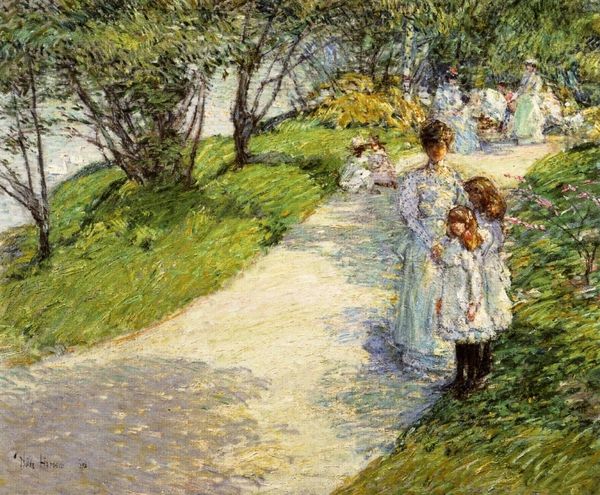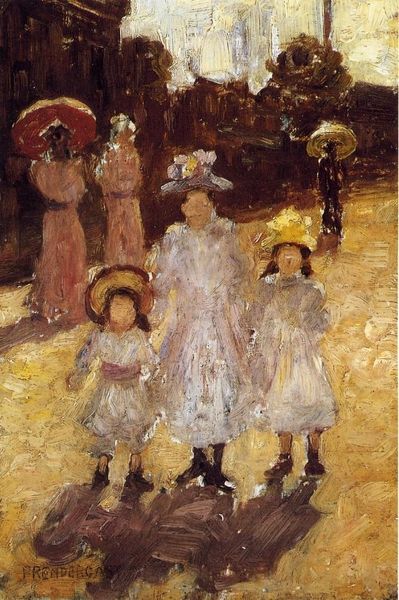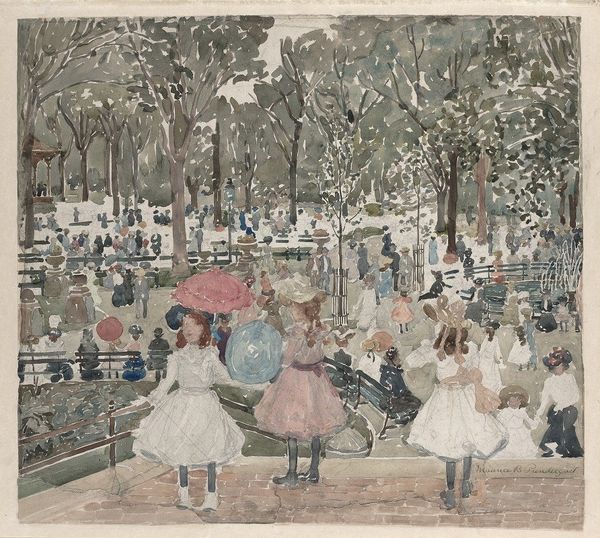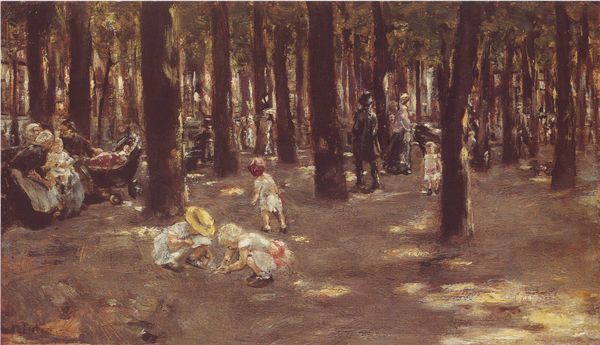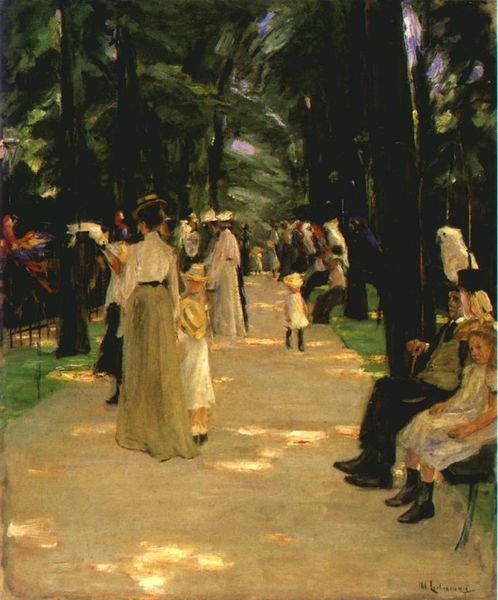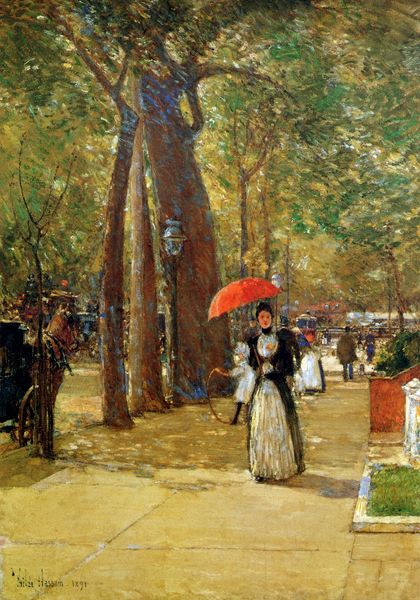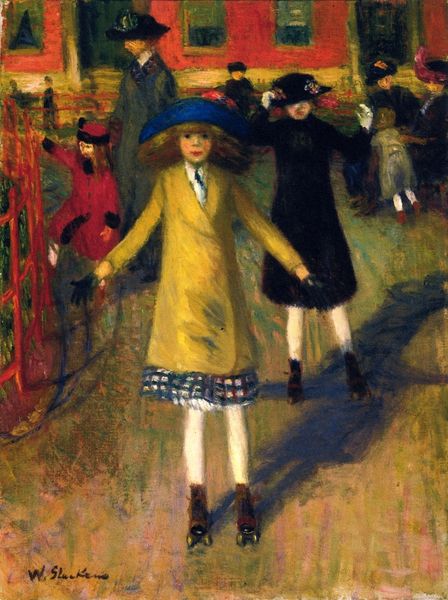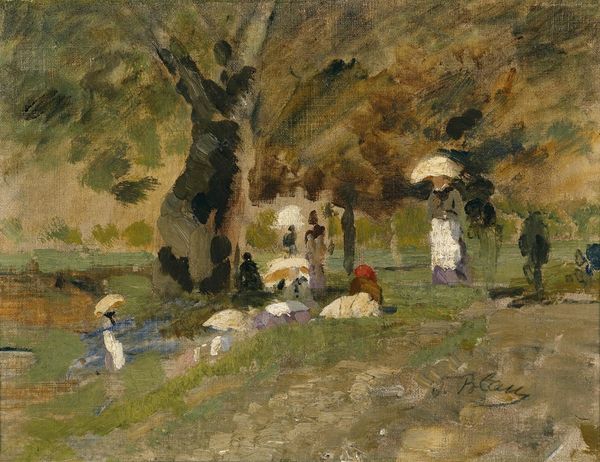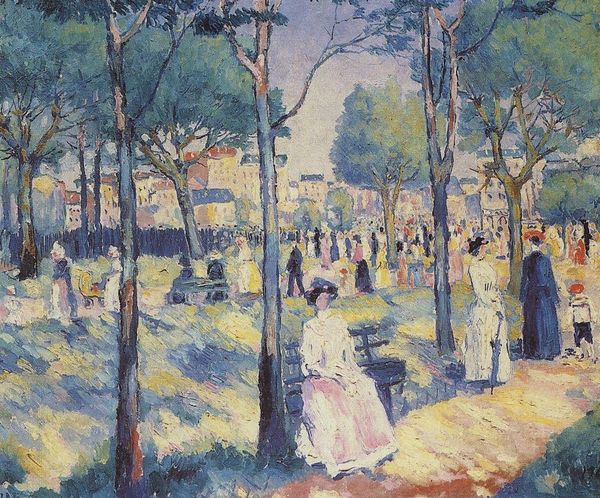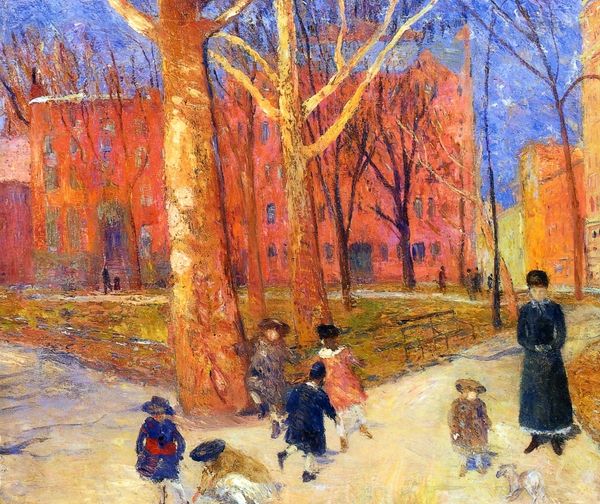
On the Way to School in Edam 1904
0:00
0:00
maxliebermann
Oskar Reinhart Foundation, Winterthur, Switzerland
Copyright: Public domain
Editor: Liebermann's "On the Way to School in Edam," painted in 1904 with oil on canvas, shows a street scene with many young girls. The painting has this bustling, lively feel. How do you interpret this work within its historical context? Curator: It's important to look at this through a lens of social commentary. Consider the historical moment: 1904. What does this painting say about the roles of women and children at the turn of the century? We see a large group of girls, identically dressed, presumably on their way to an institution of learning. How does the repetition of figures and clothing comment on emerging industrial society and ideas around conformity? Editor: I guess I hadn't considered that conformity might be a theme. Curator: Exactly. And let's delve further. Liebermann, although associated with Impressionism, was very interested in Realism early in his career. Does this image of youthful innocence truly capture reality? Where is the socioeconomic diversity? Where are children of color? We must recognize this is a specifically *bourgeois* vision of childhood. Editor: That’s true, everyone looks similar. Thinking about who *isn't* represented is crucial. What about his stylistic choices? The brushwork seems very loose. Curator: Absolutely! Think about how the loose brushstrokes could represent the fleeting nature of childhood or how these Impressionistic techniques elevate a seemingly "everyday" genre scene into the realm of fine art. It's an interesting commentary on value systems isn't it? Editor: It really changes how I view the piece, now seeing the conformity and lack of diversity... it's eye-opening! Curator: It’s these contextual layers that enable art to transcend aesthetics, and that promote deeper, more critical discussions. Always remember to question what isn’t explicitly depicted.
Comments
No comments
Be the first to comment and join the conversation on the ultimate creative platform.
